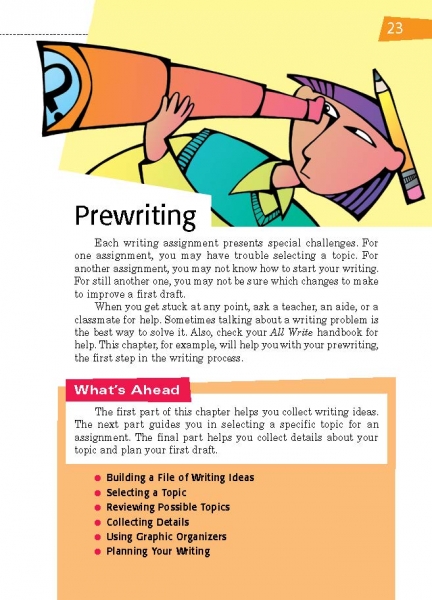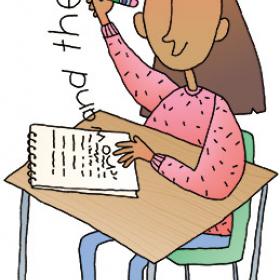Page 023 from

Start-Up Activity
Remind your students that selecting a specific writing topic is an important task during the prewriting step. Then show students how the “Basic of Life Checklist” on page 27 can be used to identify writing topics. First, review the example at the bottom of the page. Next, model another category for students. Example: Show how the animals category could lead to the general subject of pets, which could lead to specific writing topics such as bathing a dog or sheltering abandoned pets. Continue with the activity, helping your students identify specific writing topics for another category from the checklist.
Think About It
“To write about people you have to know people, to write about bloodhounds you have to know bloodhounds, to write about the Loch Ness monster you have to find out about it.”
—James Thurber

Start-Up Activity
Remind your students that selecting a specific writing topic is an important task during the prewriting step. Then show students how the “Basic of Life Checklist” on page 27 can be used to identify writing topics. First, review the example at the bottom of the page. Next, model another category for students. Example: Show how the animals category could lead to the general subject of pets, which could lead to specific writing topics such as bathing a dog or sheltering abandoned pets. Continue with the activity, helping your students identify specific writing topics for another category from the checklist.
Think About It
“To write about people you have to know people, to write about bloodhounds you have to know bloodhounds, to write about the Loch Ness monster you have to find out about it.”
—James Thurber











